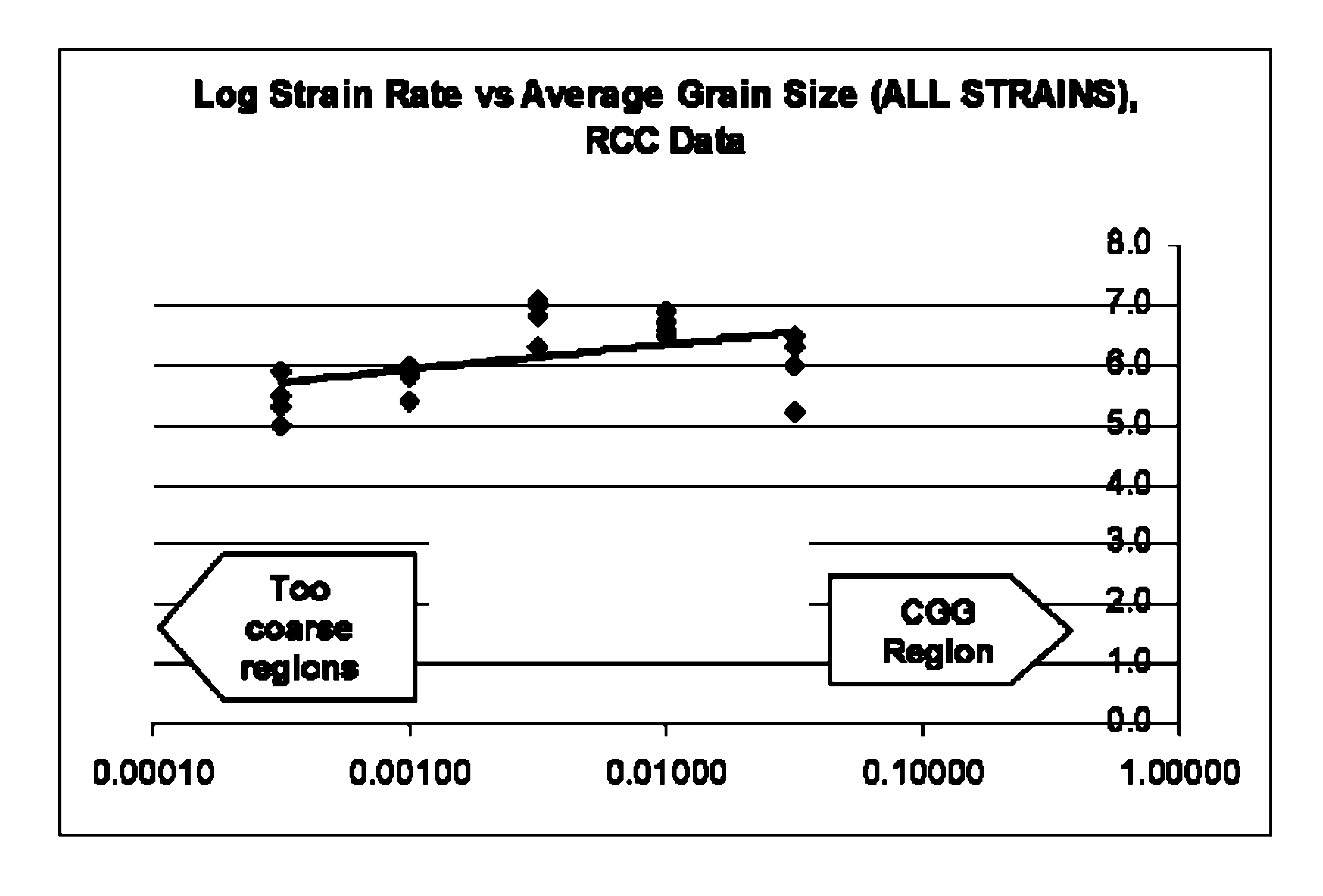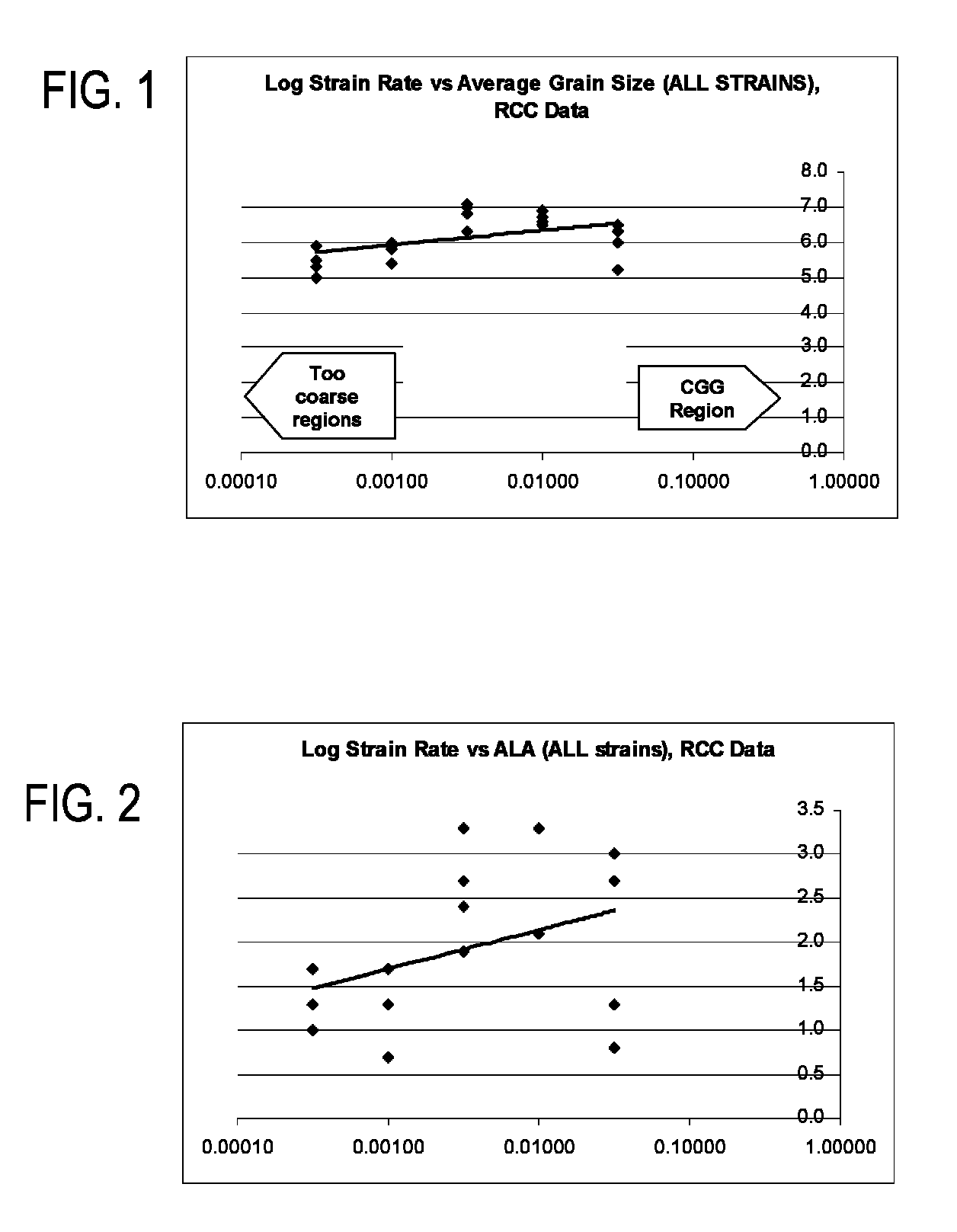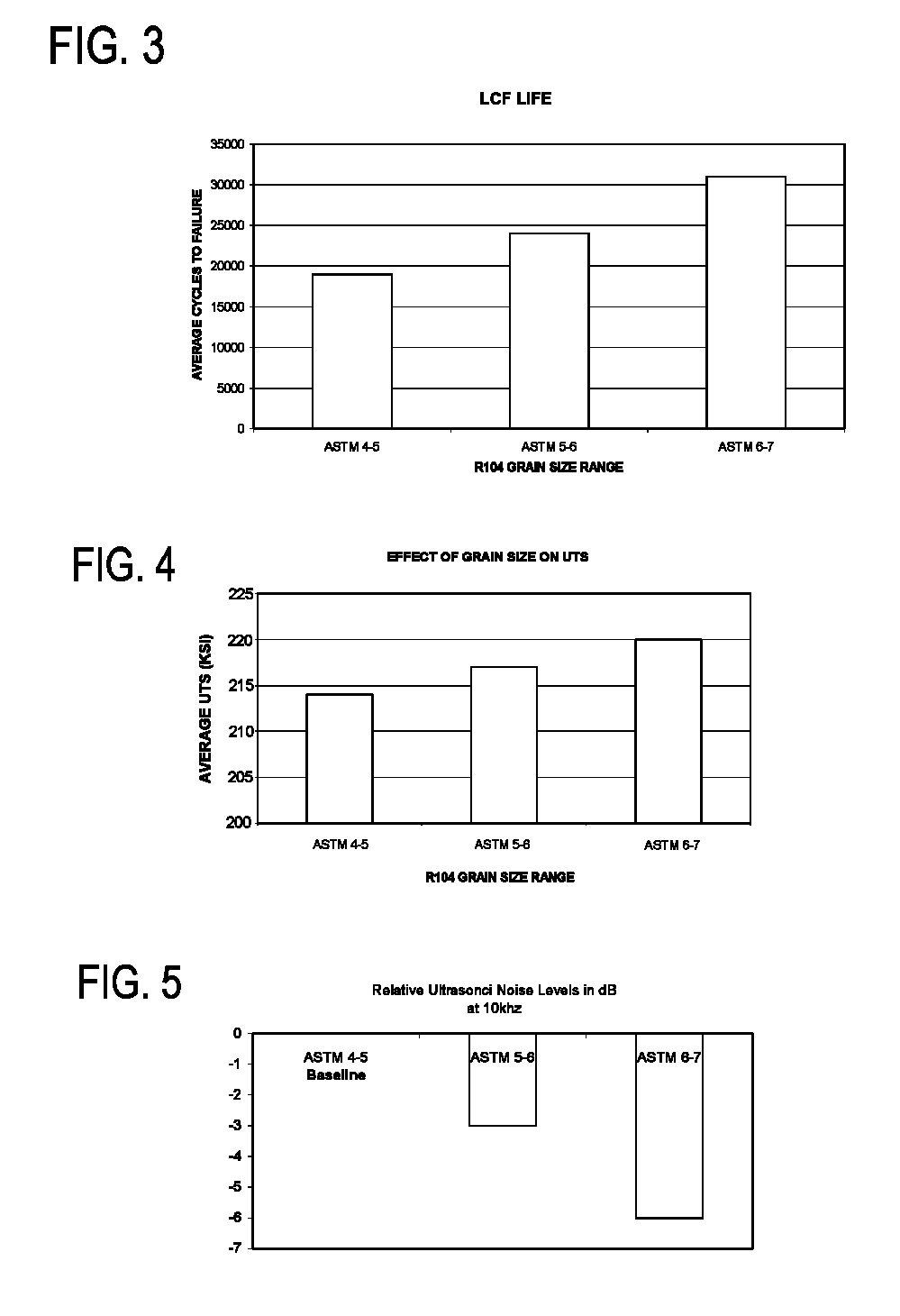Method of controlling final grain size in supersolvus heat treated nickel-base superalloys and articles formed thereby
a technology of supersolvus and superalloys, which is applied in the field of producing articles from nickelbase superalloys, can solve the problems of non-uniform critical grain growth, large grain diameters of these grains, and negative impact on other mechanical properties of the article, such as tensile and fatigue strength, and achieve uniform grain size distribution
- Summary
- Abstract
- Description
- Claims
- Application Information
AI Technical Summary
Benefits of technology
Problems solved by technology
Method used
Image
Examples
Embodiment Construction
[0018]For gamma-prime precipitation-strengthened nickel-base superalloys, nickel, chromium, tungsten, molybdenum, rhenium and cobalt are the principal elements which combine to form the gamma (γ) matrix, whereas aluminum, titanium, tantalum, niobium, and vanadium are the principal elements that combine with nickel to form a desirable strengthening phase of gamma-prime precipitate, principally Ni3(Al,Ti). When producing components such as high-pressure turbine disks of gas turbine engines by forging alloys of this type, a grain size not larger than about ASTM 10 is typically preferred during forging at temperatures at or near the recrystallization temperature but less than the gamma-prime solvus temperature of the alloy. After supersolvus heat treatment, during which grain growth occurs, such forgings typically have a preferred average grain size of about ASTM 3 to about ASTM 9. In accordancewith commonly-assigned U.S. Pat. Nos. 4,957,567 to Krueger et al., 5,529,643 to Yoon et al., ...
PUM
| Property | Measurement | Unit |
|---|---|---|
| volume fraction | aaaaa | aaaaa |
| temperature | aaaaa | aaaaa |
| temperature | aaaaa | aaaaa |
Abstract
Description
Claims
Application Information
 Login to View More
Login to View More - R&D
- Intellectual Property
- Life Sciences
- Materials
- Tech Scout
- Unparalleled Data Quality
- Higher Quality Content
- 60% Fewer Hallucinations
Browse by: Latest US Patents, China's latest patents, Technical Efficacy Thesaurus, Application Domain, Technology Topic, Popular Technical Reports.
© 2025 PatSnap. All rights reserved.Legal|Privacy policy|Modern Slavery Act Transparency Statement|Sitemap|About US| Contact US: help@patsnap.com



